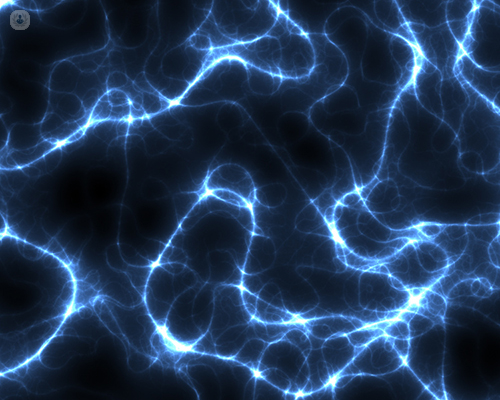PTNS – a shocking way to bring an overactive bladder under control
Written by:Posterior tibial nerve stimulation (PTNS) is a scientific way of stimulating nerves in the ankle through electrical pulses, with the aim of calming the nerves and resetting the nerves back to normal activity. Top urologist Mr Keng Jin Ng explains how this treatment can be used to treat problems with bladder control and pelvic pain.

What is posterior tibial nerve stimulation (PTNS)?
It was first experimented scientifically by a group of urologists in America in the 1980s having discovered that acupuncturists have been placing needles close to the posterior tibial nerve in the ankle while treating bladder control symptoms. Following clinical trials, PTNS has been proven to be effective in calming a big bundle of nerve endings in the pelvis called pudendal nerve. Pudendal nerves can often malfunction and cause spasm of muscles connected to the pelvic bones causing lower backache, groin and thigh pain as well as lower abdominal pain.
In addition, pudendal nerve malfunction (otherwise known as pudendal neuropathy) can also affect the bladder, causing increased frequency of voiding and urgency, as well as urge incontinence. Pudendal neuropathy can, in addition, affect the bowels, causing irritable bowel symptoms with intermittent bloating, constipation and loose motions. PTNS is FDA-approved in America for treating overactive bladder as well as faecal incontinence. PTNS has also been shown to be effective in treating chronic pelvic pain in patients with prostatitis as well as interstitial cystitis, also known as bladder pain syndrome.
How does PTNS work?
The precise mechanism of how PTNS works remains unknown. It is believed that the electric pulses somehow reset the pudendal nerve, as well as possibly the control centre in the spinal cord (sacral centre) back to normal activity. It is technically termed “neuromodulation”. A simple analogy would be like rebooting your computer system in the pelvis.
Is this a painful treatment?
PTNS is a simple outpatient procedure that is done without any need for anaesthetics. Initially, a very fine acupuncture-type needle is placed in the ankle through the skin and a sticky electrode pad placed in the arch of the foot. An electrical stimulator is then connected and would pulse the nerve for 30 minutes. During this time, the patient will get a buzzing feeling in the foot from the heel to the toes. Some patients describe it as “popcorning”. The sensation is not painful. Patients would get a distinct funny sensation in the foot during treatment. Patients may drive and resume normal activity after the treatment session. PTNS can be performed in men and women of any age group from children to the elderly. It has no significant side effects. Only patients who have a cardiac pacemaker or ladies who are pregnant should avoid such treatment.
How often does a patient need to have PTNS?
Patients with overactive bladder will need an initial 12 sessions of treatment on a weekly basis. About 70-80% of patients will respond well and will remain well for 12 months. A small number of patients will need an additional few weeks of treatment sessions once every 2 weeks to achieve the optimum result. In the longer term, the patient may require maintenance sessions of once every few months to alleviate the bladder symptoms.
PTNS is a safe and effective alternative for patients who are not responding well to tablets in controlling their overactive bladder or those who suffer intolerable side effects of oral medication. It is also an effective way of managing pelvic pain in relation to interstitial cystitis, prostatitis and in cases of memory pain (central sensitisation).


